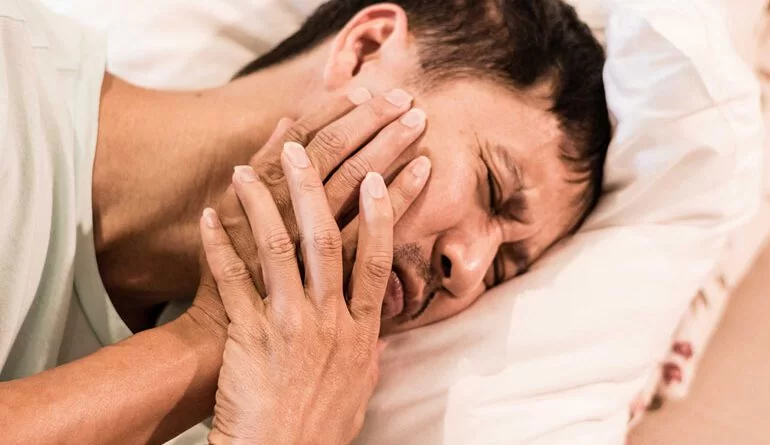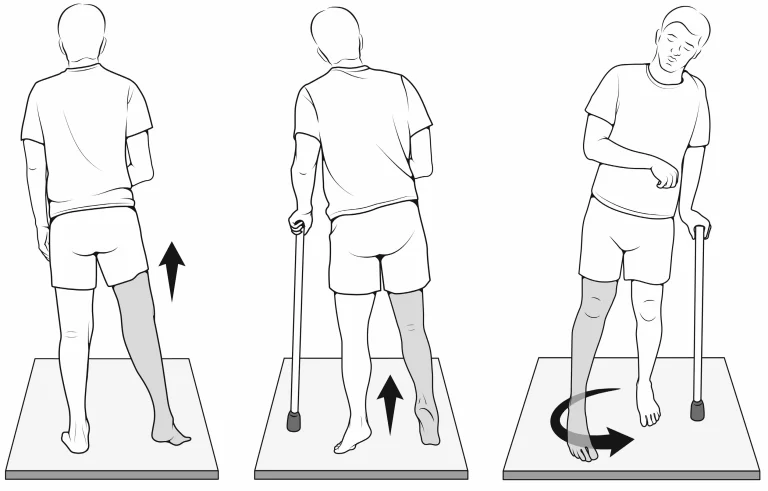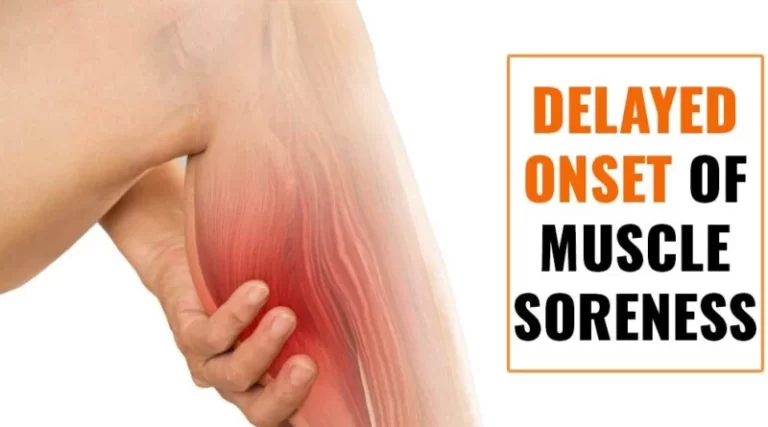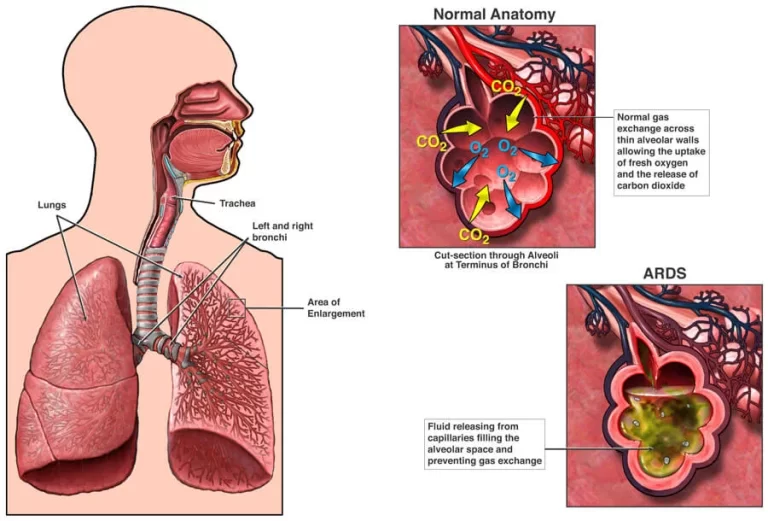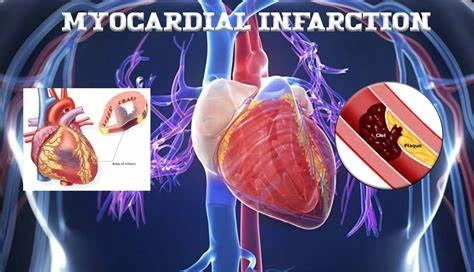Muscle pain in Jaw area
Muscle pain in Jaw is a debilitating condition which is affecting your ability to eat & speak.
This jaw pain radiates to other areas of the face.
This jaw pain occurs due to sinus infections, issues with the blood vessels or nerves, toothaches, or other conditions.
But most types of jaw pain result from the temporomandibular joint disorder.
In many cases, jaw pain does not need immediate medical attention, but sometimes, it indicates a more serious underlying condition that needs treatment.
This pain is released by to RICE principle & physiotherapy treatment.
Table of Contents
What are the causes of jaw muscle pain?
- A person is experiencing jaw pain because of an injury & strain in the jaw muscle.
- Jaw pain is a result due to physical injuries, infections, damage to the nerves or blood vessels & several other causes.
- The temporomandibular joint disorder:
- Is a cluster of conditions that affects the bones, joints & muscles which are responsible for jaw movement.
- These conditions produce pain & discomfort.
- Trauma:
- Jaw pain is also a result due to:
- A broken jaw = occurs due to a fall & a blow to the face.
- A dislocated jaw = occurs due to the result of opening the mouth too wide, such as when yawning.
- Dental surgery:
- Sometimes jaw pain occurs due to dental surgery because it may take time to recover from a procedure.
- Arthritis:
- Osteoarthritis & other types of arthritis occurs in the smooth interface between the joints & eventually the bones.
- Bone pain is lead to jow pain.
- Inflammatory conditions:
- Some inflammatory conditions like synovitis, rheumatoid arthritis & psoriatic arthritis which is produced by inflammation in the joints.
- If these all conditions affect the jaw bone joint which is lead to jaw pain.
- Dental conditions:
- Some dental conditions like as gum disease, tooth gaps, cavities, and damaged teeth & abscesses.
- These all conditions lead to jaw pain.
- Neuropathic pain:
- This type of pain occurs when the nerves become damaged & send pain signals to the brain.
- These symptoms are continuous & increase from time to time.
- Examples of this neuropathic pain include trigeminal neuralgia, postherpetic neuralgia & cancer-related pain.
- Vascular conditions:
- Sometimes when occurring to a problem with the vascular system which is lead to jaw pain.
- Some examples of vascular conditions include temporal arteritis / giant cell arteritis & angina.
- Temporal arteritis:
- These arteries stay on either side of the head in the temple region
- When it becomes too inflamed it leads to headaches & jaw pain.
- This condition also put a risk to a person’s vision.
- Angina:
- This condition develops when the heart does not get enough oxygen-rich blood which is usually due to a coronary artery blockage.
- This condition is produced by chest pain & jaw pain.
- When you suffer from angina it is also the risk of experiencing a heart attack.
- Osteomyelitis:
- It occurs in rare cases & occurs to an infection called osteomyelitis which affects the jaw bone & associated tissues.
- It is a rare complication of dental surgery.
- Cluster headaches:
- It is typically produced in pain behind & around one of the eyes, but this pain also radiates to the jaw pain.
- Cluster headaches = it is one of the most painful types of headache.
- Sinus problems:
- Sinuses are air-filled cavities that are located close to the jaw joint.
- When the sinuses become infected with a germ like a virus or a bacterium.
- This is given to result in excess mucus which puts pressure on the jaw joint, causing pain.
- Some other conditions which are produced by jaw & facial pain include:
- Obstructive sleep apnea
- Sinusitis
- Salivary gland disorders
- Autoimmune conditions, like as lupus
- Ear infections
- Stress, fatigue, and a lack of sleep
- Fibromyalgia
- Some mental health conditions
What is the sign & symptoms of jaw muscle injury?
- You feel pain in the face & jaw.
- You are heard clicking, popping & grinding sounds during the opening or closing of the jaw.
- The feeling of tooth grinding or clenching during sleep or times of emotional stress
- You feel difficulty in chewing or opening the mouth.
- Sometimes feeling a burning sensation in my mouth.
- Sensitivity in teeth.
- You feel joint & muscle tenderness.
- You are experiencing a limited range of motion – ROM.
- Sometimes occur to joint alignment issues.
- You feel headaches with & without ear pain which is also pressure behind the eyes.
- Sometimes feeling of dizziness & vertigo.
- You feel fever & facial swelling.
How do you diagnose jaw muscle pain?
- To diagnose jaw pain, a doctor asks question about the symptoms & causes & try to know about the causes of the muscle pain.
- Then the doctor does a physical examination & observes swelling & redness.
- Then the doctor recommends a blood test & an imaging study.
- In some cases of pain, the doctor is also suggesting psychological & psychiatric screening.
In which condition do you need to contact a doctor as an emergency?
- Jaw pain does not always need medical attention, but you are contacted to doctor when you feel to :
- Home remedies do not help to relieve your jaw pain.
- When your jaw pain is interfering with your daily routine.
- When your jaw starts to make a clicking & popping sound when moving the jaw.
- If you feel pain occurring in the neck & upper back.
- When you also feel eye pain, vision changes & headaches.
- When occur to feel tinnitus & ringing in the ears with jaw pain.
- If you are suffering from dental problems like infection.
What are complications of the jaw muscle pain?
- This complication arises when you are not seeking medical attention for jaw pain.
- The complications depend on the cause & other factors including the treatment approach.
- Some possible complications of jaw muscle pain include:
- Emotional distress
- Infections
- Dental complications
- Ongoing pain
- Surgical complications
- Loss of appetite due to pain, difficulty chewing & swallowing.
How do you treat jaw muscle pain at home?
- Adopting a soft diet that prevents excessive jaw movement.
- Do the massage at home on the pain area.
- You are used to braces to straighten your teeth, but use to carefully because if they become too painful.
- Apply ice & heat therapy to the muscle pain.
What is the treatment for jaw muscle pain?
Treatment of jaw pain depends on the cause of the pain.
RICE principle:
When you feel pain in the jaw muscle doctor is advised to RICE principle as home treatment or primary treatment.
- R – rest = When you feel muscle pain doctor is advised to your rest for sometimes form of activities means do not do any mouth activities & eating soft & liquid foods or avoid eating crunchy & chewy foods that release muscle pain.
- I- ice = Place the ice in a plastic bag &wrap it in a thin cloth & apply it to your face for 10 minutes.
- Then rest for 10 minutes before reapplying the ice.
- C- compression = you are used to braces to straighten your teeth, but use to carefully because if it becomes too painful.
- E- elevation = it is not possible for jaw muscle because it increases the pain but always use to soft pillow during sleeping.
Pain medication :
A doctor prescribes some medications:
- Advice to antibiotics medication when your pain is a reason for bacterial infection.
- Sometimes advice to muscle relaxants.
- The doctor is advised to oral, spray & topical medications for pain relief.
- Advice to antiviral therapy to treat viral infections like herpes zoster.
- Advice to use the mouth protectors like a mouthguard.
- It is a plastic dental protector which is worn on your upper & lower teeth that is custom-fitted for your mouth.
- Wearing this mouthguard at bedtime which is help to stop you from unconsciously grinding your teeth.
Dental treatment :
- The doctor is advised to some dental treatment when your pain occurs due to dental causes include to:
- Tooth extraction.
- Root canal treatment.
- Heat or cold therapy.
Botox & steroid injections:
- When the pain is not relieved after the pain medication then advised injections decrease inflammation & swelling.
- Sometimes doctors also advise botox cosmetic injections.
- In this injection injected into the jaw muscles is the botulinum toxin found in Botox it keeps your jaw muscles from clenching & possibly helps to relieve jaw pain due to TMD.
- These injections are applied to last for months at a time & require re-injection later.
What is Physiotherapy treatment for jaw muscle pain?
When the muscle pain is not relieved after the home treatment & pain medication then the doctor has advised physiotherapy treatment to release muscle pain.
Physiotherapy treatment is help you relieve pain, swelling, spam & tightness of the muscle pain.
The physiotherapy treatment includes massage, electrotherapy treatment & exercise therapy.
Massage:
- When the trigger & tender points are present in the muscle pain area therapist is advised to massage therapy release to the muscle pain
- Use your index & middle finger & press the sore areas of your jaw, like the area right before your ear where your jaw joints meet.
- Rub & massage in a circular motion for 5 to 10 rotations, then open your mouth & repeat this exercise.
- Do the massage on the muscles on the side of your neck which is help to relieve tension.
Electrotherapy treatment:
After the RICE principle, pain medication & massage if the muscle pain is not relieved then used Electrotherapy treatment for released to muscle pain.
To relive the swellings, spams & pain therapist is advised to you electrotherapy treatment.
In electrotherapy, the treatment therapist is used to many machines.
- When the trigger & tender points are present therapists are advised & to apply US = ultrasound therapy for the release of muscle pain.
- This treatment is applied with the help of gel & applies for 5 to 10 minutes on the area of pain.
- This therapy helps you release pain & swelling.
- Reduce pain therapist is applied to TENS = Transcutaneous Electrical Nerve Stimulation & IR = Infrared therapy on the area of pain.
- IR = Infrared therapy is hot therapy for release to spam on the area of pain & it is an innovative therapy that is used to manage acute or chronic pain.
- TENS = Transcutaneous Electrical Nerve Stimulation is applied with the help of gel & electrodes on the area of pain.
- This therapy is applied for 10 minutes to the area of pain.
- You are also used to a mouth opener machine & ice cream stick for the exercise of the opening of the jaw.
Exercise therapy for jaw muscle pain :
After following the RICE principle for the 2- 3 days at home & primary treatment & the help of pain medication, you feel released from the pain.
When you feel too comfortable & release from your muscle pain then the physiotherapist is advised to you exercise therapy reduce to muscle weakness & tightness.
The exercise therapy for muscle pain includes Stretching & strengthening Exercises.
Stretching exercise helps to relieve muscle tightness as well as strengthening Exercise is help you relieve muscle weakness.
Stretching exercise:
After the follow of Electrotherapy for 2-3 days for release to muscle pain by physiotherapist then the therapist is advised to stretch for release to muscle tightness.
This stretching is applied when your pain is released & when you feel comfortable.
- Neck muscle Stretch
- Active Jaw Stretching Exercise
- Passive Stretching Exercise
Neck muscle Stretch:
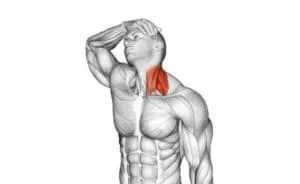
Stretching the neck muscle is another way to maintain good posture & reduce tension in your neck or jaw muscles.
- First, flex your head forward then move backwards.
- Try to move your head to the left & then to the right.
- Slowly flex your head or pull your ear to your shoulder while must keep your shoulder joint relaxed, as you can.
- Stop this stretching if you feel any pain.
- Repeat this stretching exercise on the other side.
- Hold this stretching position for 20 to 40 seconds & repeat 3 times.
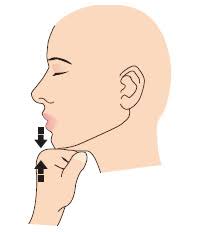
Active Jaw Stretching Exercise:
This stretching exercise is stretch your jaw muscles, but should not produce pain when you experience pain, then perform this stretching very carefully.
- First, hold your head steady & open your mouth as wide as possible you & hold for ten seconds.
- Try to move your lower jaw to the right & hold for 5 seconds.
- Then move your lower jaw to the left & hold for 5 seconds.
- After that move, your lower jaw in a circle to the one side means left then move your lower jaw in a circle to the right means another side.
- Repeat this stretching 5 times & do these 3 times per day.
Passive jaw Stretching Exercise:
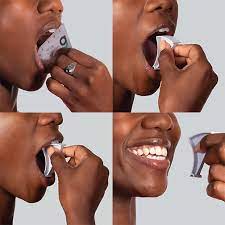
This stretching exercise applies to lightly stretch your jaw muscles to relieve pain.
- First, place your thumb on the top teeth which are located in the middle of your jaw.
- Then place the index finger of your other hand on the bottom teeth which are located in the middle of your jaw.
- Try to open your mouth as wide as you feel comfortable & using your fingers to apply extra resistance.
- Hold this stretching position for 5 to 10 seconds.
- Stop this stretching exercise when you feel any pain.
- Repeat this stretching exercise 5 times.
Strengthening Exercises:
After the follow of Electrotherapy & massage for 2 -3 days to release muscle pain by the physiotherapist then the therapist is advised to you do strengthening exercises for muscle weakness.
This strengthening exercise is always advised when you feel to release pain & when you feel comfortable.
This all-strengthening exercise helps you with muscle weakness & pain.
- Relaxed jaw exercises
- Goldfish exercises – partial opening
- Goldfish exercises – full opening
- Chin tucks
- Resisted opening of the mouth
- Resisted closing of the mouth
- Tongue up
- Side-to-side jaw movement
- Forward jaw movement
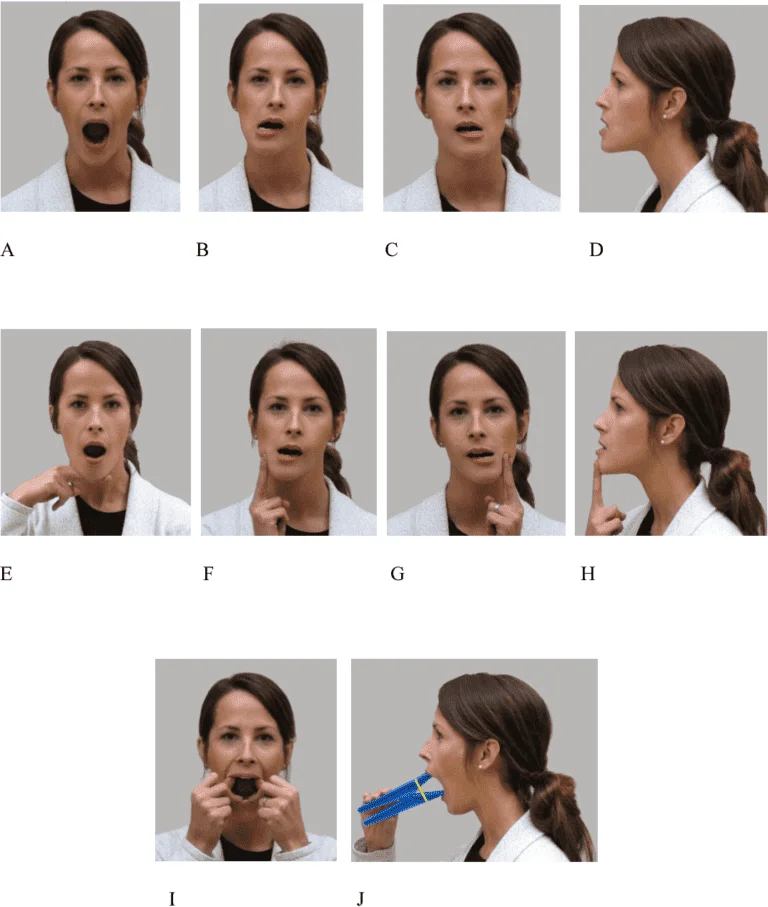
Relaxed jaw exercises:
- This exercise is done in a sitting position.
- First, rest your tongue gently on the top of your mouth behind your upper front teeth.
- Try to allow your teeth to come apart while relaxing your jaw muscles.
- Perform 10 times in 1 session & 3 sessions per day.
Goldfish exercises – partial opening:
- This exercise is done in a sitting position.
- First, place your tongue on the roof of your mouth & place one finger in front of your ear.
- Then put your middle & pointer finger on your chin.
- Try to drop your lower jaw halfway & then close it.
- It is produced to mild resistance but stops when you feel pain.
- For a variation of this exercise, you place one finger on each TMJ.
- Try to drop your lower jaw halfway & closed again.
- Do this exercise 6 times in one set & do 6 sets per day.
Goldfish exercises – full opening:
- This exercise is done in a sitting position.
- Must be keeping your tongue on the roof of your mouth.
- Place one finger on the TMJ & another finger on your chin.
- Try to drop your lower jaw completely & back.
- For a variation of this exercise, you place one finger on each TMJ & completely drop your lower jaw & back.
- Do this exercise 6 times in one set & do 6 sets per day.
Chin tucks:
- This exercise is done in a sitting position.
- With your shoulder joint back & chest up.
- Then pull your chin straight back & creating a “double chin.”
- Hold this exercise for 5 seconds & repeat 10 times in 1 set.
- Perform 3 sets per day.
Resisted opening of the mouth:
- This exercise is done in a sitting position.
- First Place your thumb under your chin.
- Then try to open your mouth slowly & pushing gently against your chin for resistance.
- Hold this exercise for 3 to 6 seconds & close your mouth slowly.
- Perform 10 times in 1 session & 3 sessions per day.
Resisted closing of the mouth:
- This exercise is done in a sitting position.
- First Squeeze your chin with your index & thumb in one hand.
- Try to close your mouth as you place gently pressure on your chin.
- This exercise helps you strengthen your muscles which is help you chew.
- Perform 10 times in 1 session & 3 sessions per day.
Tongue up:
- This exercise is done in a sitting position.
- First with your tongue touching the roof of your mouth.
- Try to slowly open & close your mouth.
- Perform 10 times in 1 session & 3 sessions per day.
Side-to-side jaw movement:
- First put a ¼-inch object, such as stacked tongue depressors, between your front teeth.
- Try to slowly move your jaw from side to side.
- This exercise becomes easier & increases the thickness of the object between your teeth.
- Then stacking them one on top of each other.
- Perform 10 times in 1 session & 3 sessions per day.
Forward jaw movement:
- This exercise also requires a thin object.
- Then gently hold an object that is about one-quarter of an inch thick between the front teeth.
- Try to move the jaw forward so that the bottom teeth are in front of the top teeth.
- This exercise becomes easier than replacing the object with a thicker one.
- Perform 10 times in 1 session & 3 sessions per day.
What is a surgical treatment for jaw muscle pain?
After the medical treatment & physiotherapy treatment pain is not relieved then the doctor is advised surgical treatment.
Surgery for jaw muscle pain is very rare.
- But some serious conditions may require surgery like TMD problems
- This treatment is usually reserved for people with severe pain & pain due to structural problems in the jaw joint.
What is the long-term goal for this jaw muscle pain?
Some long-term goal that also helps you with jaw muscle pain :
- Always take care of regular dental care.
- You must reduce stress by trying meditation, yoga & other types of exercise.
- Always do the massage on the jaw area which helps to relax the muscles & increase blood flow.
- On daily basis use a mouthguard to stop the teeth from grinding together.
- Always adopt the correct posture & not carry a heavy bag for too long time on one shoulder joint.
Which foods can help in jaw muscle pain?
- When you suffer from jaw pain & discomfort follow a healthful diet that ensures that you get the right nutrients.
- On that, you need to avoid chewy, hard & crunchy foods.
- Some dietary options include:
- Smoothies
- Cottage cheese
- Soft fruits
- Plain yoghurt
- Mashed vegetables
- Fish
- Scrambled eggs
- Soaked or cooked oats
- Lentil soup or chicken broth
- Fresh fruits & vegetables are excellent choices for muscle pain and provide all the nutrients.
How to prevent jaw muscle pain?
When you experienced jaw pain the following tips help to prevent it from returning.
- You are eating soft & liquid foods like soup & pasta.
- Must be avoided by eating crunchy & chewy foods like gum.
- Always taking too small bites of food.
- Avoid caffeine:
- Your morning cup of joe contributes to your muscle tension, which is increased by caffeine.
- Avoiding large amounts of caffeinated coffee & tea which helps to reduce your jaw pain over time.
- But if you initially feel muscle tension from caffeine withdrawal which is cutting it out of your diet.

